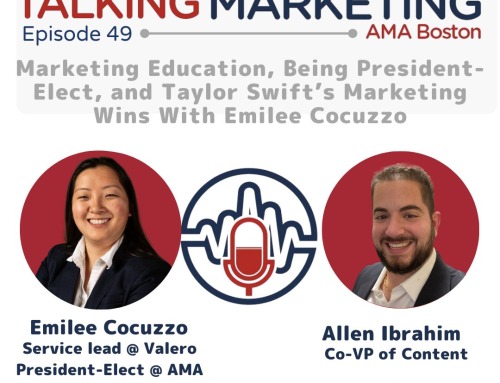You may be following a lead, sending a regularly scheduled newsletter to subscribers, making an offer to a targeted audience, or trying to strike up an initial relationship. Whatever your marketing goals for your email campaigns, your team may be struggling to craft effective emails – those that actually get opened, read, and result in a conversion.
When your results are not ideal – it’s time to take a step back to discover what may be hindering your results.
The Art and The Science of Business Emails – Collaboration is Key
Yes, you do have to think scientifically about email. That means accessing data. You have probably already done some research and understand your customer persona, the needs, and the pain points. You don’t need a data scientist to decipher this research. You need to “hunker down” and dig deeper into your target audience and your competitors. Tools like Buzzsumo will give you the most popular topics your target audience is accessing as a good starting point. You can use this information to drive the topics you choose for your email campaigns.
Then, there is the art of creating the subject lines and the content of your emails. Here is where your team needs to put on their “creativity” caps and craft subject lines and content that will engage, entertain, educate, and inspire recipients.
Veronica Wright, CEO at ResumesCentre emphasizes, “When we are looking at a new email campaign, our first focus is on subject lines. The entire team holds a brainstorming session to develop these because we know how critical they are to getting opens. And, even though one team member may be tasked with the content, everyone pitches in with creative ideas. Collaboration among my team members is absolutely critical to a successful campaign.”
Your Takeaway? This is a team effort!. When you involve everyone, “ownership” is achieved, and the results are so much better. In my experience, companies often make the mistake of putting one person in charge of email marketing, when it should really be a thoughtful and collaborative process.
What if You are a Team of One?
In a small business, you might be a single content marketer. In this case, you are probably trying to wear many “hats,” and that can be challenging. Setting up an ongoing and successful email marketing campaign takes time.
You may want to consider some outside resources that will make your life easier. Here are a few that I recommend:
- MailChimp: If you are not already using an automated email service with a lot of other benefits, this one may be for you. You have to create the email subject lines and content, but they do the rest. They even segment your audiences according to the criteria you provide. Plus, you get the data analytics to determine success.
- FlashEssay: This writing service has an exceptional copywriting department, filled with creatives who will take any topic you have for an email, and craft amazing copy with compelling subject lines.
- Title-Generator: Stuck trying to come up with compelling subject lines? With a keyword or two, you can get up to 700 headline possibilities – probably more than you want!
- Slick Write: This app allows you to check your writing for grammar errors and potential stylistic mistakes.
- EssaySupply: Here is another writing service that has moved heavily into the copywriting business. Its department of content marketers and journalists is hard to beat.
- Build Fire: This site has bunches of information on templates and examples of effective email campaigns. You can get some great ideas here.
Common Elements for Successful Business Emails
So, let’s take a look at some of the successful elements of business emails that data has shown achieve good results.
- It’s All About Benefit
No one will open an email unless there is the promise of a valuable benefit. So, what is it that your recipients will find valuable? The question you must always ask is, “What’s in it for them?” If you have a solid answer to this question, then you know what your subject line and content must focus on.
And the value or benefit may differ for different segments of your target. If you have not segmented out your email list, at least in terms of current customers, those who have shown some interest, and those who have not had any communication with you, then your email is too generic.
- Dump the Fluff
People are busy, and they don’t want long walls of text. Don’t include long explanations or details.
“Be as simple and as clear as possible. Stick to what you said the email was about in the subject line, and then ask for a response. You want a “hook” to pique interest, and then some type of conversion” – Christopher K. Mercer, digital marketer and founder of Citatior reveals.
- Be Specific
While you should avoid excessive detail, the trick is to still be specific.. Perhaps you are offering a free trial or a special discounted rate; maybe you have a new product or an update that gives even more value.
You must also be specific about what you want your recipient to do now. Do you want a reply; do you want a call for further discussion; do you want to set up a meeting? Do you want a click to begin a free trial or to download a white paper or ebook? Tell them what to do – CTAs are a good bet.
- Use Psychological Triggers Adeptly
There are a number of psychological triggers that marketers use when trying to “push” prospects to make a purchase. Two that can be used (but in moderation, please) for business emails are the following.
- FOMO: Also known as “fear of missing out.” You might be offering a workshop, seminar or podcast on a trending topic in the business niche. Participation may be limited, and there may be a registration deadline date. You will want to stress the importance of getting registered now, so as to have a place “at the table.”
- Sense of Urgency: This is related to FOMO. You may have a free trial or a discounted price for a limited time only; you may want a response by a certain date to receive a bonus offer.
Give a reasonable amount of time for your recipients to respond but do make the deadline certain. Be clear about deadlines but in a calm and considered way. If you are too aggressive, you might sound desperate – not a good thing.
- Always Put or Repeat Your Call to Action at the End
You are not sending emails for the sake of just being professional and nice. You want the recipient to do something. As Natalie Andersen, CEO of GetGoodGrade says, “You can’t be ‘wishy-washy’ about what you want a prospect to do. You have to state clearly what action he must now take, or you will leave him confused about what to do next.”
You may mention your call to action earlier in an email but be sure to end with it. Sometimes it may be in the form of a question. Regardless, clarity is key!
- Watch Your Structure and Format
Lots of color, font variance, and different sizes can irritate your reader. Clean, simple formatting will make your email look more professional. Use bold headings and bullet points as necessary, just as you would with any content, but keep both format and structure as scannable as possible.
- Analyze the Results
If you don’t gather the data about how your emails are doing, you will not know what is working and what is not. Some good benchmarks for success include:
- Open rate metrics
- Click rate metrics
- AB testing on subject lines
This information should be used to drive how you move forward with future campaigns.
Conclusion:
If you are going to spend the time, energy and money for email campaigns, then you need to be sure you are doing it right. Sometimes going back to basics and slowing







